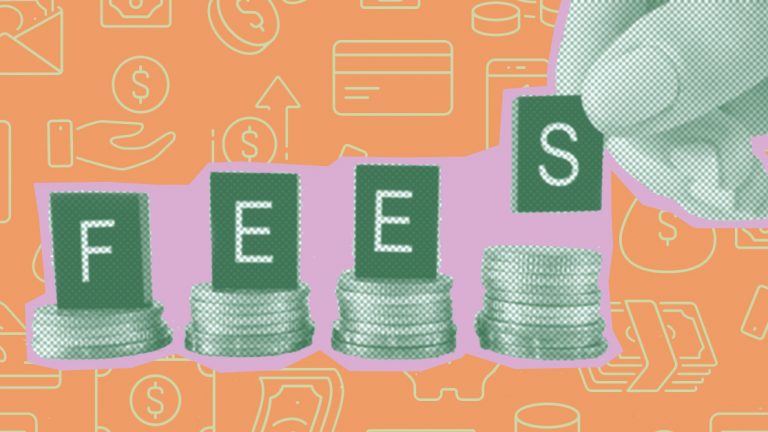Navigating the banking system in the US can sometimes feel like walking through a minefield of fees. From monthly maintenance charges to ATM fees, these costs can quickly add up, eating away at your hard-earned money. Fortunately, with a bit of knowledge and careful management, it’s possible to avoid most, if not all, of these fees.
Avoiding bank fees requires a proactive approach, understanding where fees are most likely to occur, and taking steps to minimize or eliminate them. In this guide, we’ll explore practical strategies to help you keep your money where it belongs—safely in your account.
Understanding common bank fees

Before you can effectively avoid bank fees, it’s essential to understand the most common types you may encounter. Banks often charge fees for a variety of services, but the most frequent ones include monthly maintenance fees, overdraft fees, ATM fees, and foreign transaction fees.
Monthly maintenance fees are charged by many banks just for holding an account with them. These fees can range from $5 to $15 per month, but they are often avoidable if you meet specific requirements, such as maintaining a minimum balance or setting up direct deposits.
Overdraft fees are incurred when you spend more money than you have in your account, and the bank covers the difference. These fees can be hefty, sometimes as much as $35 per transaction, and can quickly add up if you’re not careful.
ATM fees can occur if you use an ATM outside of your bank’s network. These fees typically range from $2 to $5 per transaction. Foreign transaction fees are charged when you make purchases or withdrawals outside the US, usually around 3% of the transaction amount.
Choosing the right bank account
One of the most effective ways to avoid bank fees is by choosing the right bank account from the start. Many banks offer accounts with no monthly maintenance fees, especially if you meet certain conditions, such as maintaining a minimum balance or setting up direct deposit.
When selecting a bank account, it’s important to read the fine print and understand all the potential fees associated with the account. Some banks may waive fees if you maintain a certain balance, while others might offer fee waivers for students, seniors, or members of specific organizations. By choosing an account that aligns with your financial habits, you can avoid many common fees altogether.
Additionally, consider whether the bank offers ATM fee reimbursements or has a large network of fee-free ATMs. If you travel frequently or live in an area with limited access to your bank’s ATMs, having an account that offers ATM fee reimbursements can save you a significant amount of money.
Setting up alerts and monitoring your account
Another crucial strategy for avoiding bank fees is staying on top of your account activity. Many banks offer free alerts that can notify you of low balances, large transactions, or upcoming bills.
By setting up these alerts, you can avoid overdraft fees by transferring money into your account before a transaction goes through. Regularly monitoring your account online or through your bank’s mobile app is also essential.
This will help you keep track of your spending, ensure that you have enough funds to cover upcoming transactions, and spot any unauthorized charges quickly. Being proactive in managing your account can prevent costly mistakes that lead to fees.
Avoiding overdraft fees
Overdraft fees are among the most expensive and frustrating charges that bank customers face. However, there are several strategies you can employ to avoid them. First, consider opting out of overdraft protection.
While this may seem counterintuitive, opting out means that if you attempt to make a purchase that exceeds your balance, the transaction will be declined, and you won’t incur a fee.
If you prefer to keep overdraft protection, link your checking account to a savings account or a line of credit. This way, if you overdraw your account, the funds can be transferred automatically from your savings or credit line, usually for a much smaller fee than a standard overdraft charge.
Another effective approach is to keep a buffer of funds in your account that you don’t touch. This safety net can help you avoid overdrawing your account if you forget about an upcoming bill or make an unexpected purchase.
Using in-network ATMs and planning for travel
ATM fees might seem small, but they can add up quickly, especially if you frequently withdraw cash from out-of-network machines. To avoid these fees, make a habit of using only ATMs that are within your bank’s network. Most banks have tools on their websites or mobile apps to help you locate nearby ATMs.
Avoiding bank fees in the US is all about being proactive and informed. By choosing the right account, monitoring your finances, and being mindful of your banking habits, you can keep your money in your pocket and avoid unnecessary charges.
Whether it’s steering clear of overdraft fees, using in-network ATMs, or negotiating with your bank, taking these steps can significantly reduce the amount you pay in fees over time.

